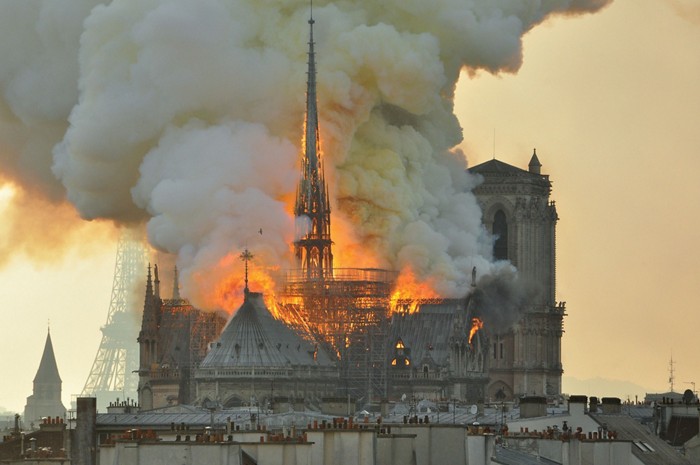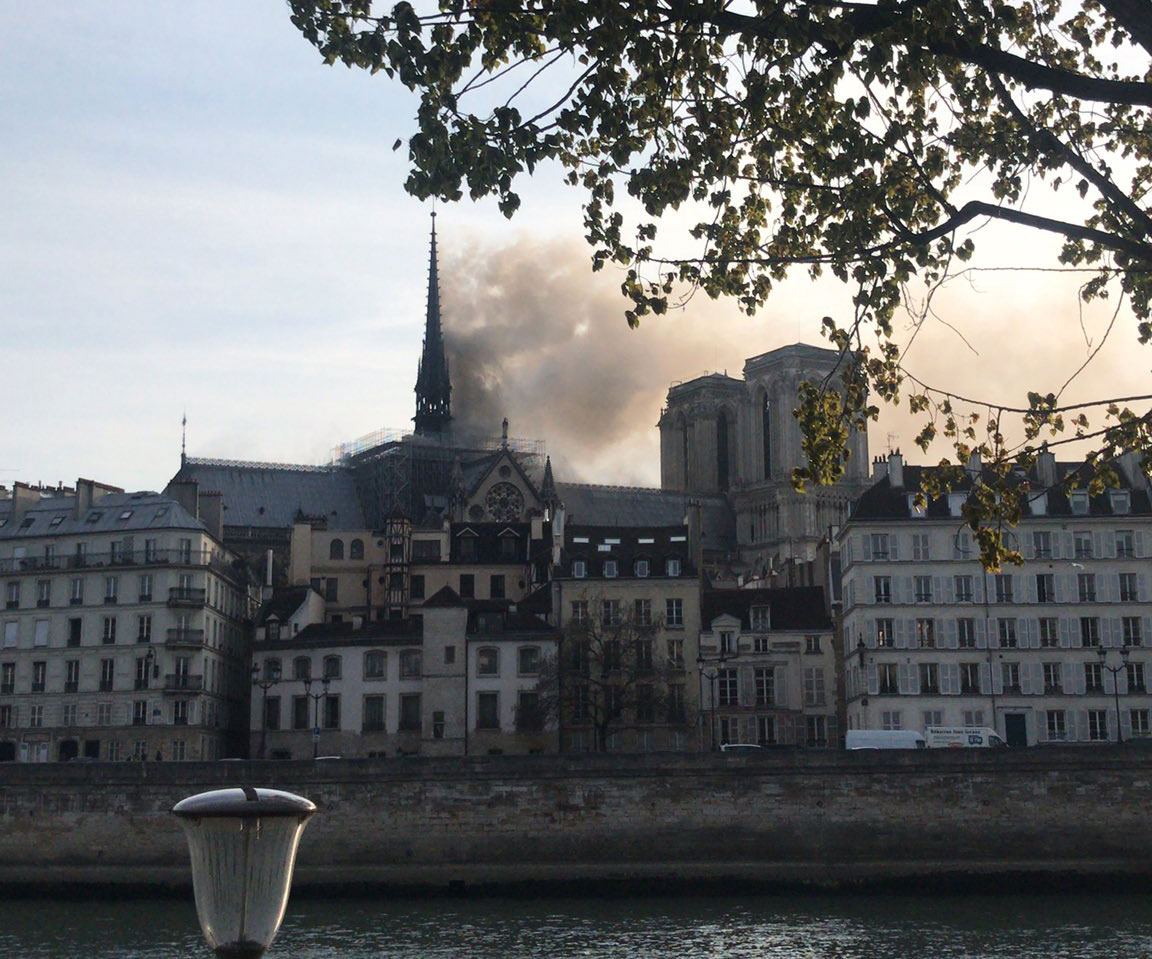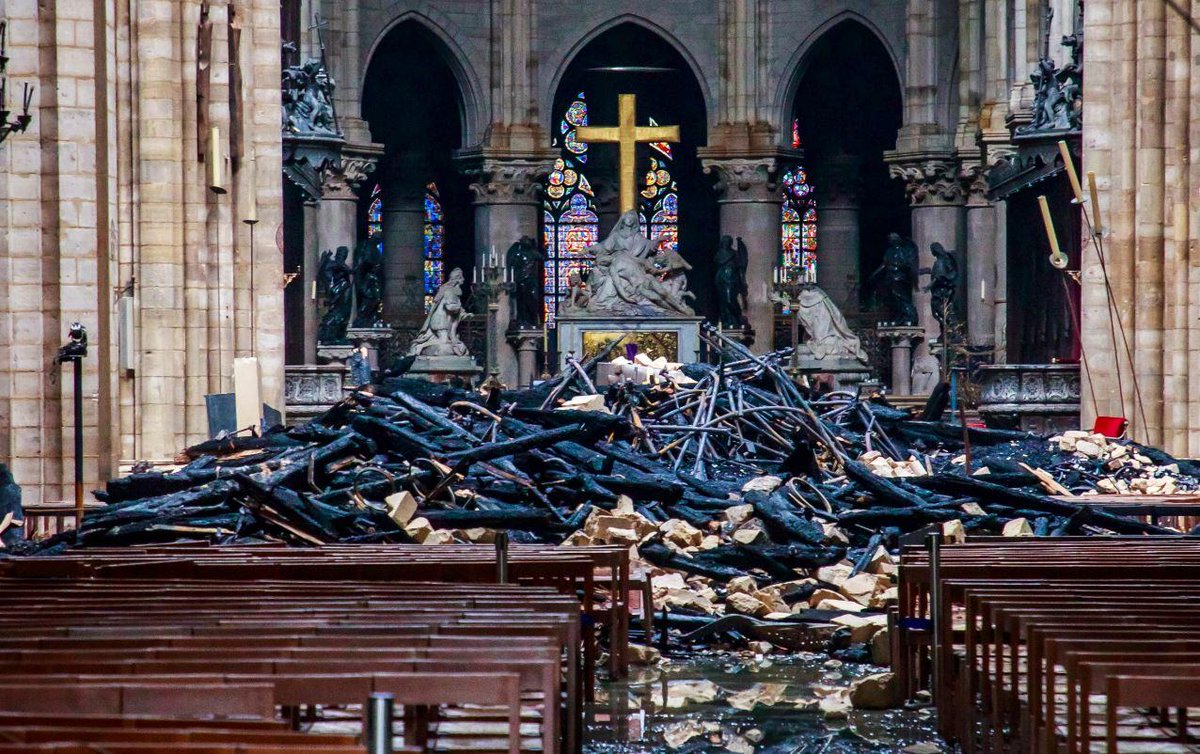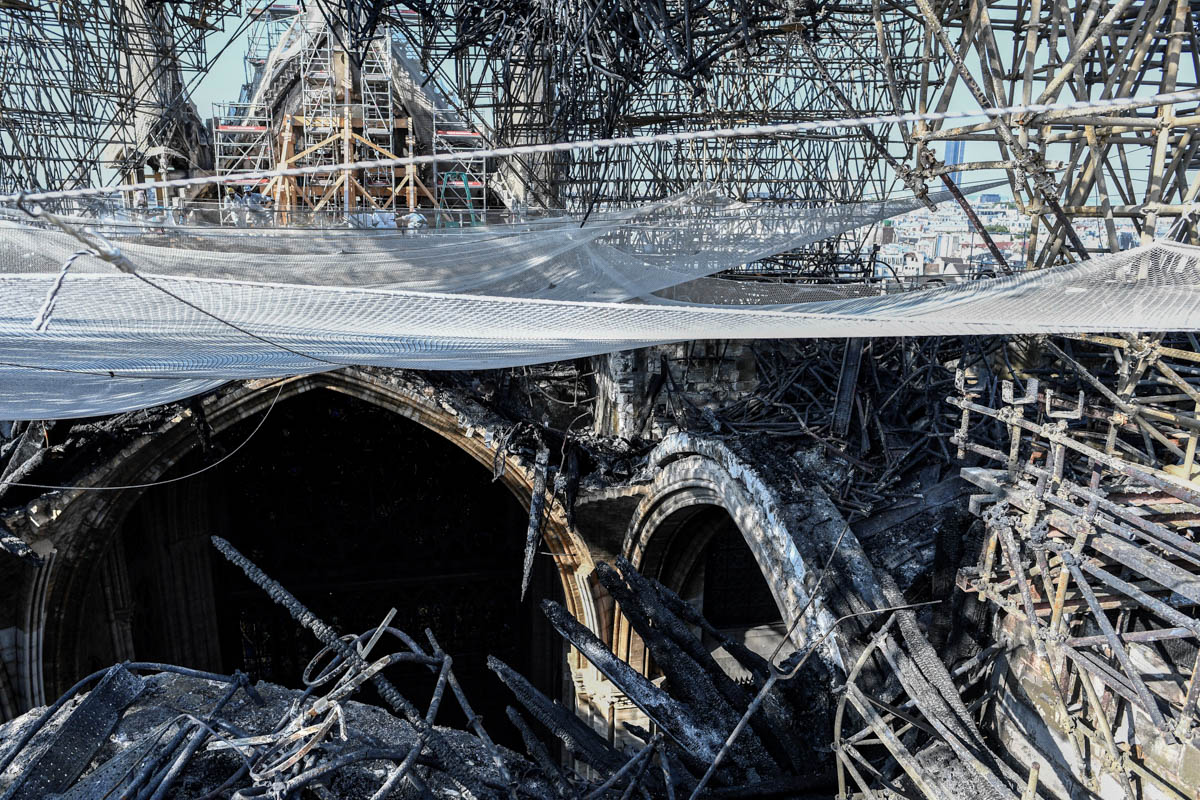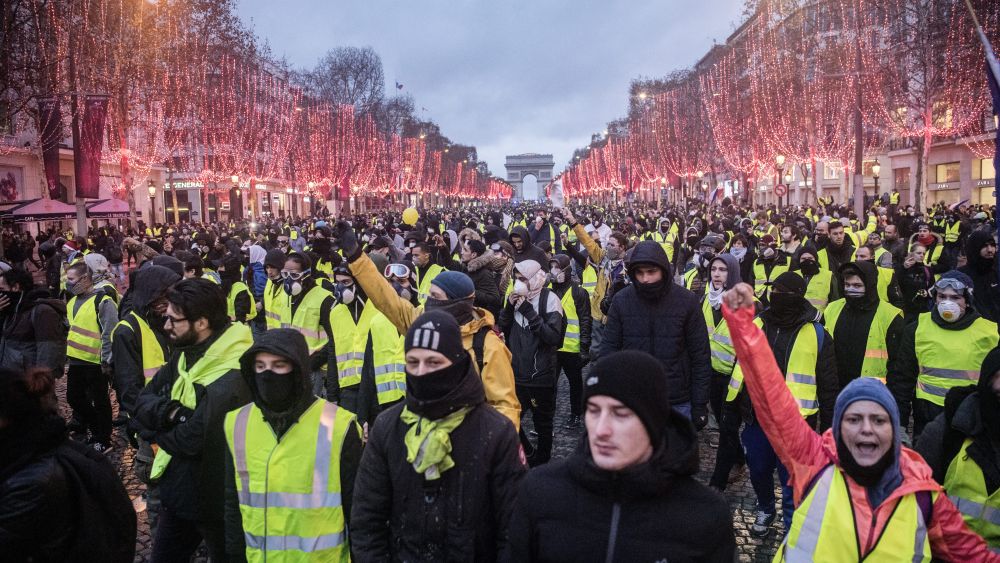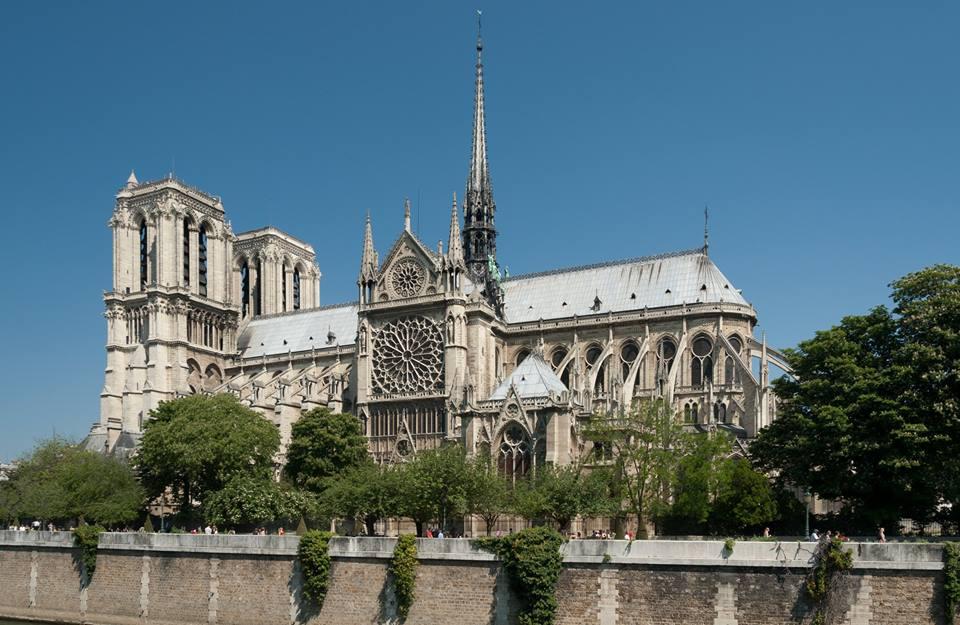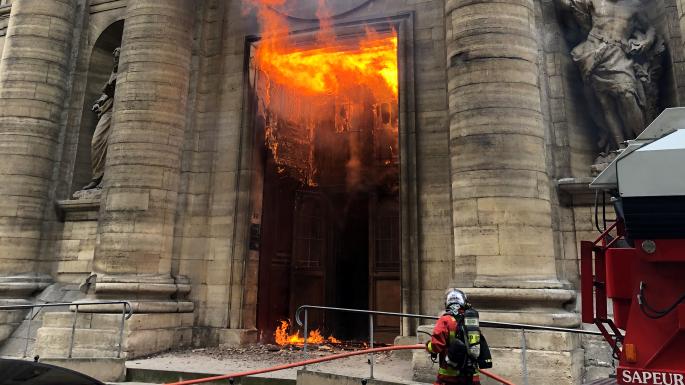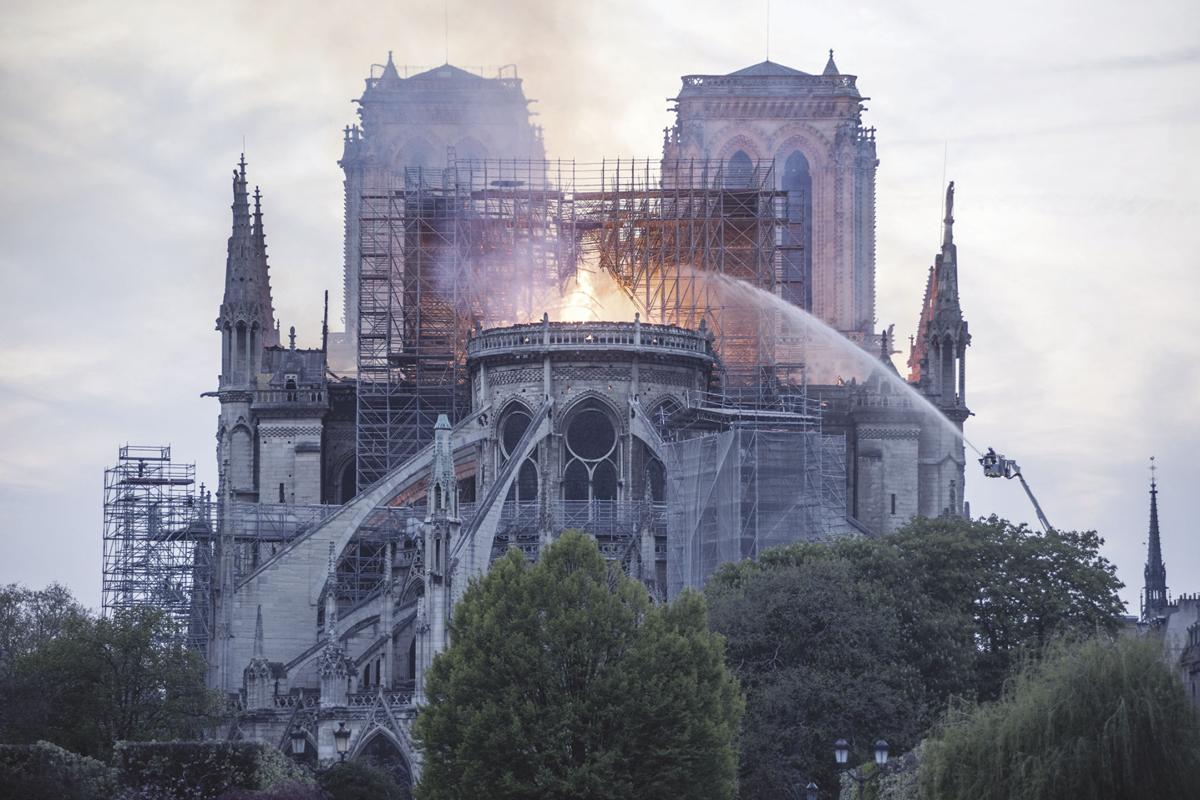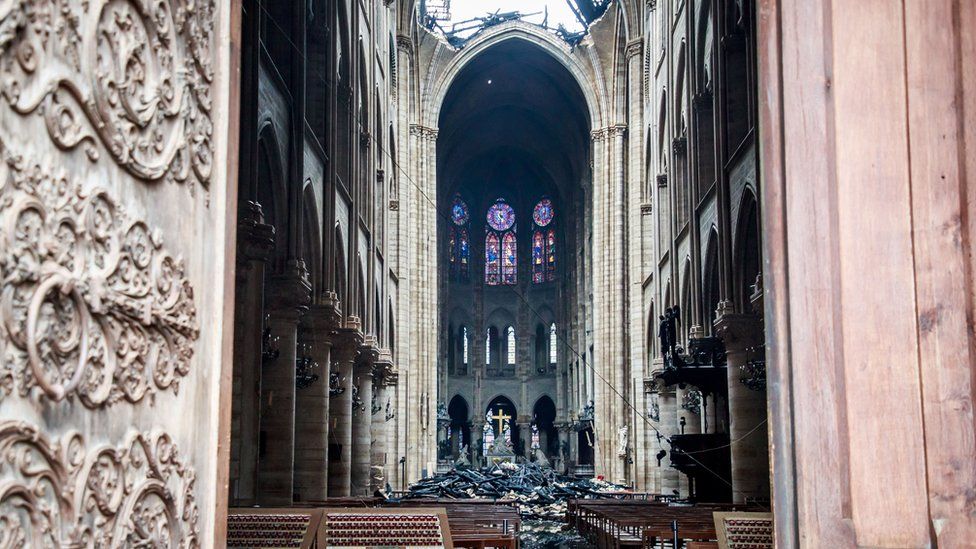A year after the Notre Dame fire, we still don’t know for sure what started it. An investigation has determined a likely cause, but there’s no direct evidence any which way.
Given what we do know, though, we still have to take the possibility of arson very seriously.
A thread.
Given what we do know, though, we still have to take the possibility of arson very seriously.
A thread.
The Notre Dame fire began around 6:18 on the evening of 15 April 2019, when a fire alarm went off in the cathedral. A Mass being held was briefly evacuated as a security guard was dispatched to check it out. https://www.nytimes.com/interactive/2019/07/16/world/europe/notre-dame.html">https://www.nytimes.com/interacti...
The guard went to the sacristy, where the fire monitor believed the origin to be, where he found nothing. It wasn’t until 6:43 that they realized their mistake: the alarm was actually coming from the cathedral attic. It took the guard another 5 minutes to climb the 300 steps.
By that point, smoke was already billowing out of the spire. Inside the attic, the guard found flames that were already 3 meters high, forcing him back. Only then was the fire department called.
Fire fighters were able to extinguish the blaze after a heroic 15-hour battle. Although the roof was gone and the spire had collapsed, crashing through the stone vaulting below, they had averted complete structural collapse. Notre Dame was saved.
Once the investigation began, it was a tough to determine the cause. Renovations were being done on the spire at the time, but the last workers had left 30 minutes before the fire broke out—no one saw flames until 30 minutes after the first alarm.
This was partly a result of faulty response protocol. Although Notre Dame’s aspirating smoke detectors were extremely good, “all the sensitive technology had been undone by a cascade of oversights and erroneous assumptions built into the overall design.” https://www.independent.co.uk/news/world/europe/notre-dame-collapse-fire-fighters-paris-cathedral-tower-bells-a9010131.html">https://www.independent.co.uk/news/worl...
This caused mutual recriminations between the security guard and the monitor: the guard said the monitor did not give the full reading that would have let him determine the origin of the fire right away. The monitor denied this.
(The monitor, it should be noted, was only on his third day on the job, and was pulling a second shift because his replacement hadn’t shown up.)
This raises the possibility that either might not bring up all evidence in order to avoid blame. Whatever the case, it was much harder to determine the cause without eyewitnesses. And because the fire burned so big, hot, and long, it was much harder to find clues in the rubble.
Several cigarette butts were found on the scene, and it was later revealed that some of the workers had smoked while on the scaffolding in violation of fire safety rules. This was deemed unlikely to have been sufficient to start the fire, though.
Investigators preferred an explanation involving an electrical short: either from the electrified bells in the spire or the temporary work elevators (although not everyone thought this possible). https://www.nytimes.com/2019/04/25/world/europe/notre-dame-fire-investigation.html">https://www.nytimes.com/2019/04/2...
The investigators’ hypothesis makes sense. It’s plausible, fits the timeline, and is not contradicted in any obvious way.
But when there’s a gaping hole in the evidence, lots of explanations fit those criteria. You still have to take other possibilities very seriously.
But when there’s a gaping hole in the evidence, lots of explanations fit those criteria. You still have to take other possibilities very seriously.
The most obvious competing one was a deliberate act. 875 churches were vandalized in France in 2018 alone, not counting thefts and vandalism of graveyards. https://www.thesun.co.uk/news/8804063/france-church-arson-attacks-vandalism-christian-heritage/">https://www.thesun.co.uk/news/8804...
The months leading up to the Notre Dame fire saw an escalating series of vandalism: statues smashed, altars desecrated, satanic symbols, feces smeared on walls. This culminated in a fire at Saint-Sulpice, Paris’ second-biggest church, just a month before. https://www.newsweek.com/spate-attacks-catholic-churches-france-sees-altars-desecrated-christ-statue-1370800">https://www.newsweek.com/spate-att...
Many incidents were teenagers& #39; pranks, others doubtlessly accidents. The Saint-Sulpice fire, while certainly human-caused, might have accidentally started by homeless people.
But many more deliberate and ideological: anarchism, anticlericalism, etc. https://www.washingtonpost.com/religion/2019/04/02/satanic-symbols-shattered-statues-several-catholic-churches-have-been-under-attack-france/">https://www.washingtonpost.com/religion/...
But many more deliberate and ideological: anarchism, anticlericalism, etc. https://www.washingtonpost.com/religion/2019/04/02/satanic-symbols-shattered-statues-several-catholic-churches-have-been-under-attack-france/">https://www.washingtonpost.com/religion/...
A lot of what drives these patterns of vandalism is what @johnrobb calls stigmergy. He used the term to describe how insurgents in Iraq would learn what techniques and targets were effective by looking at media coverage of other groups. https://globalguerrillas.typepad.com/globalguerrillas/2004/07/stigmergic_syst.html">https://globalguerrillas.typepad.com/globalgue...
The same principle drives protests, market activity, and even explains why sports broadcasters do not show streakers (to avoid giving ideas to others). Naturally, it’s also at work in escalating cycles of vandalism.
Nor are church attacks unique to France alone. There has been a rash of vandalism across Latin America:
https://cruxnow.com/church-in-the-americas/2020/03/mexican-churches-attacked-during-womens-day-marches/
https://cruxnow.com/church-in... href=" https://www.lifesitenews.com/news/feminists-attack-churches-with-gasoline-bombs-rocks-graffiti-on-international-womens-day
https://www.lifesitenews.com/news/femi... href=" https://en.mercopress.com/2019/10/16/women-s-rally-in-argentina-ends-with-attacks-on-churches-and-a-boob-protest">https://en.mercopress.com/2019/10/1...
https://cruxnow.com/church-in-the-americas/2020/03/mexican-churches-attacked-during-womens-day-marches/
In Latin America, the attacks come from the extremist fringe of a larger feminist protest movement. The movement’s flash-mobs spread worldwide last year, including to France—a powerful stigmergic response indicating the scale of the decentralized network. https://www.youtube.com/watch?v=s5AAscy7qbI">https://www.youtube.com/watch...
The radical feminists behind church vandalism in Latin America might have completely different ideological goals than vandals in France. But so long as they share similar targets, they are highly sensitive to stigmergic response and can learn from one another.
At the same time, another movement driven by stigmergy was ongoing: the Yellow Vest protests, which had started in October 2018. Disparate protestors across France picked up lessons from one another, learning what worked from what they saw on the news.
Yellow Vest protests saw vandalism too, at the Arc de Triomphe. Whether this was done by genuine protesters or hooligans taking advantage of the chaos, it shows how a single focus can bring together many disparate interests. https://time.com/5469052/france-paris-protests-marianne-statue/">https://time.com/5469052/f...
This is all to say that there was a large pool of various extremists—anarchists, feminists, radicals of other persuasions—who might have an interest in attacking a monument of massive symbolic importance.
In this context, the Saint-Sulpice fire on 17 March was a HUGE stigmergic signal, even if only by accident: the 2nd-largest church in Paris could be set on fire in the middle of the day without, anyone being able to determine the culprit. This advertised a massive opportunity.
(Islamic terrorism is a far less likely candidate—jihadis generally prefers bombs, attack people over monuments, and almost always claims responsibility. Nevertheless, there was also an attempt less than three years prior: https://www.msn.com/en-au/news/world/five-women-botched-notre-dame-car-bomb-terror-plot-by-using-wrong-fuel-to-light-fuse-paris-court-hears/ar-AAHJHkS?li=AAgfIYZ&%2525252525253Bocid=mailsignout)">https://www.msn.com/en-au/new...
Okay, so there is a large group of people that WOULD attack Notre Dame if they could. Was it in fact possible? Could someone even get into the attic of the church?
Indeed, someone could. Scaling the cathedral has been popular among urban climbers in recent years. These people aren’t vandals, but they do attract a more anarchist crowd.
https://www.dailymail.co.uk/news/article-2562134/Tales-world-Daredevil-photographer-escapes-security-guards-climb-worlds-famous-buildings-poses-photos-dress.html
https://www.dailymail.co.uk/news/arti... href=" https://www.wbur.org/hereandnow/2013/10/14/hidden-cities-gates">https://www.wbur.org/hereandno... https://www.gq.com/story/urban-explorers-gq-march-2013">https://www.gq.com/story/urb...
https://www.dailymail.co.uk/news/article-2562134/Tales-world-Daredevil-photographer-escapes-security-guards-climb-worlds-famous-buildings-poses-photos-dress.html
At the time of the fire, it wasn’t even that hard—scaffolding reached down to ground level. And in fact lots of people climbed it in the year leading up to the fire.
https://www.lci.fr/social/notre-dame-de-paris-un-chantier-monumental-2118163.html">https://www.lci.fr/social/no...
https://www.lci.fr/social/notre-dame-de-paris-un-chantier-monumental-2118163.html">https://www.lci.fr/social/no...
The host in this clip makes the point that these intrusions happened at night, not in broad daylight. But that fits the pattern of other church attacks. And the Saint-Sulpice fire, whatever the cause, happened midday without anyone determining the culprit. https://www.youtube.com/watch?v=bG-5NrPm4Po">https://www.youtube.com/watch...
There was no work going on in the attic itself on 15 April, so workers wouldn’t easily see an intruder. And as mentioned before, mutual recriminations between the security guard and the fire monitor raise doubts about crucial security information from coming to light.
Added to that, the complete breakdown of the fire detection process casts doubts on all parts of the security apparatus—can we trust that all other parts were working correctly if one broke down so catastrophically?
All this only shows that there were motives and possible means for an arson attack. That alone proves nothing, and there could be plenty of stronger explanations. But as of the days following the fire, it should have been a top priority to investigate.
….the only trouble is that officials started downplaying the idea before the flames were even put out. Barely four hours after the fire department was first called, the Paris prosecutor announced that an inquiry was being opened into an accidental fire https://apnews.com/91d9711a9e5549109dd04d264e02b720">https://apnews.com/91d9711a9...
President Macron avoided mentioning the possibility of arson in the immediate aftermath. If anything, he downplayed the importance of the origin, casually saying that fires occur for all sorts of reasons—he emphasized rebuilding.
https://twitter.com/EmmanuelMacron/status/1250317938357239808
https://twitter.com/EmmanuelM... href="">https://www.youtube.com/watch...
https://twitter.com/EmmanuelMacron/status/1250317938357239808
Even in the American media, there was a very strange, seemingly visceral reaction to even the suggestion that it could have been arson: https://www.theblaze.com/news/fox-news-hosts-shut-down-guests-connect-notre-dame-fires-to-recent-attacks-in-france">https://www.theblaze.com/news/fox-...
Who knows why they had such an immediate reaction. Maybe they feared backlash if people blamed Muslims. Maybe they didn’t want to make their security services to look incompetent. Maybe they just didn’t want to face the horrifying thought that someone could do such a thing.
Whatever the reason, there is simply no way they could have reasonably ruled out arson on the day of the fire. They couldn’t do chemical tests for accelerants or look for any other kind of ignition device. Given recent events, arson still had to be considered a real possibility.
The explicit minimization of that possibility—made early and from on high—couldn’t help but influence the subsequent investigation. Whether deliberately or not, they sent a message that they did not want to find arson.
Barring a smoking gun, any evidence of arson would have to be pieced together from many wisps of evidence. Investigators would face an uphill battle to make their case in the face of official disapproval.
This could cause investigators to do anything from second-guessing themselves (“This can’t possibly be what I think it is”) to outright ignoring evidence. Even worse, they might not even look for it in all the places they should.
This is why the lack of direct evidence is important:
-If investigators produce evidence that there was no arson, we can trust other experts to verify it.
-What outside experts CAN’T verify is that they’re seeing all the evidence.
-If investigators produce evidence that there was no arson, we can trust other experts to verify it.
-What outside experts CAN’T verify is that they’re seeing all the evidence.
Lack of evidence should *never* be used to dismiss something when human interests determine the collection of evidence. It’s inexcusable not to know better by now:
-After the 2008-9 banking crisis, not a single executive was prosecuted—for “lack of evidence.”
-After the 2008-9 banking crisis, not a single executive was prosecuted—for “lack of evidence.”
-“No evidence” for Jeffrey Epstein’s murder, though preposterous to the point of becoming an open joke.
-As late as mid-January, we saw the WHO deny that COVID was transmissible by human contact. This was in plain view, with plenty of contrary evidence publicly available.
-As late as mid-January, we saw the WHO deny that COVID was transmissible by human contact. This was in plain view, with plenty of contrary evidence publicly available.
The past two decades have provided more than ample reason not to take official narratives at their word. This does not require cockamamie conspiracy theories built on the flimsiest details. Reasonable suspicions can no longer be dismissed out of hand based on lack of evidence.
Because of this, we might not ever know the cause. Either the final report would have to make an extremely good case for some other cause, or investigators would have to come forward with evidence of arson.

 Read on Twitter
Read on Twitter